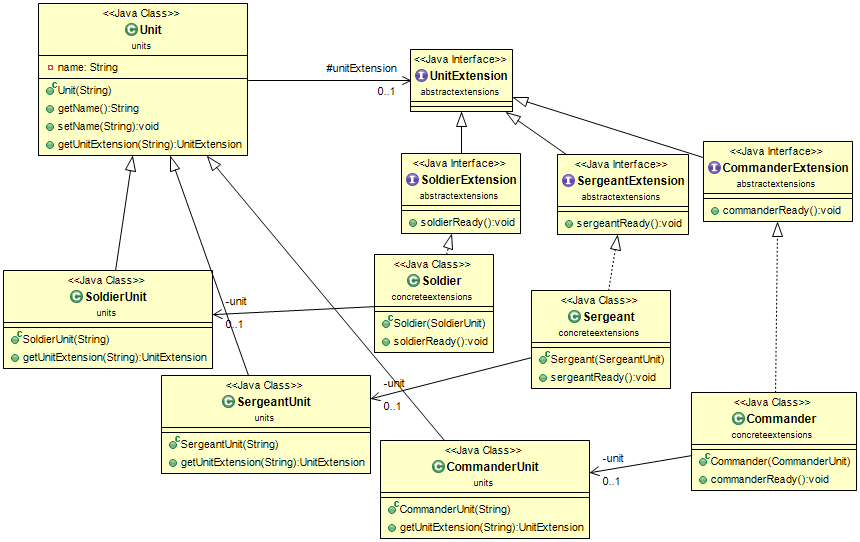* Made minor changes in some patterns such as removed throws clause where not needed, changed incorrect order of arguments in assertEquals * Minor refactorings and code style changes. 1) Removed several use of raw types 2) Removed unnecessary throws clauses 3) Used lambda expressions wherever applicable 4) Used apt assertion methods for readability 5) Use of try with resources wherever applicable 6) Corrected incorrect order of assertXXX arguments * Removed unused import from Promise * Addressed review comments * Addressed checkstyle issue
layout, title, folder, permalink, categories, tags
| layout | title | folder | permalink | categories | tags | ||
|---|---|---|---|---|---|---|---|
| pattern | Extension objects | extension-objects | /patterns/extension-objects/ | Behavioral |
|
Intent
Anticipate that an object’s interface needs to be extended in the future. Additional interfaces are defined by extension objects.
Applicability
Use the Extension Objects pattern when:
- you need to support the addition of new or unforeseen interfaces to existing classes and you don't want to impact clients that don't need this new interface. Extension Objects lets you keep related operations together by defining them in a separate class
- a class representing a key abstraction plays different roles for different clients. The number of roles the class can play should be open-ended. There is a need to preserve the key abstraction itself. For example, a customer object is still a customer object even if different subsystems view it differently.
- a class should be extensible with new behavior without subclassing from it.
